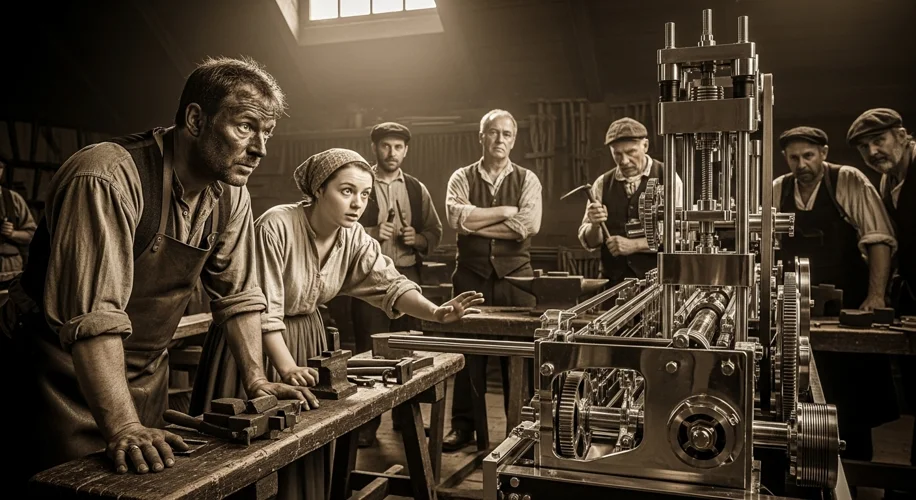We often celebrate technological advancement as a pure good, a relentless march towards a better future. And in many ways, it is. But as someone who’s spent decades in the tech industry, I’ve also seen firsthand how rapid shifts can create significant disruption for the people whose livelihoods depend on the old ways. It’s not a new story; history is full of examples where progress came with a human price tag.
Think about the Industrial Revolution. The invention of the power loom in the late 18th century was a marvel of engineering, drastically increasing textile production efficiency. Suddenly, intricate patterns that once took skilled weavers days to complete could be produced in hours. The economic benefits were undeniable, leading to cheaper clothing and new industries. However, for the handloom weavers who had honed their craft for years, this innovation was devastating. Their skills became largely obsolete overnight. Many were forced to abandon their trades, migrate to factory towns, and compete for meager wages in the very same automated processes that had displaced them.
This pattern repeated itself as electricity began to replace manual labor and steam power. As new machines took over tasks previously done by human hands, entire professions faced decline. Craftsmen who specialized in tasks that could be mechanized often found themselves struggling to adapt. The transition wasn’t always smooth; it involved periods of unemployment, retraining efforts (often insufficient), and social unrest as communities grappled with changing economic realities.
Fast forward to the early 20th century, the rise of the automobile. While it brought unprecedented personal freedom and reshaped our cities, it also led to the decline of horse-drawn carriages and related industries. Blacksmiths, farriers, and carriage makers had to either pivot their skills to the burgeoning automotive sector or find entirely new lines of work. The demand for mechanics and assembly line workers soared, but the skills and experience of those in the previous era weren’t always directly transferable.
Even in my own field, software, we’ve seen this play out. Remember the days of mainframe computing and specialized programming languages? As personal computers became widespread and software development methodologies evolved, many roles shifted dramatically. The meticulous punch-card operators and specialized hardware technicians of one era had to retrain or transition as systems became more integrated and user-friendly. Each leap in processing power, each new operating system, each wave of automation reshapes the labor market.
The current discussions around artificial intelligence and advanced robotics bring these historical parallels sharply into focus. The efficiency and capabilities offered by these new technologies are truly remarkable. But we must also consider the impact on the workforce. As AI can now perform complex analytical tasks and robots take on more intricate manufacturing and service roles, we are likely to see further shifts in the labor market. The question isn’t whether these technologies will advance – they will. The crucial question is how we, as a society, manage the transition for the people affected.
History teaches us that ignoring the human element in technological progress is a mistake. While we can’t halt innovation, we can strive to ensure that the benefits are shared more broadly and that those displaced by new technologies are supported through robust education, retraining programs, and social safety nets. It’s about finding a balance where technological advancement serves humanity, rather than leaving segments of it behind. This isn’t just about economics; it’s about maintaining the dignity and stability of individuals and communities.

